Tactical Notes: Dogfighting.......... some dos and don'ts |
Dogfighting the Scouts |
"I try anything I can, tightest bank, turns, side slips, but with lightning speed he anticipates all my moves and reacts at once. Slowly I realize his superiority. His aircraft is better, he can do more than I, but I continue to fight. Another curve. For a moment he comes into my sights. I push the button on the stick... the machine gun remains silent... stoppage!" ........ Ernst Udet describing his classic engagement with Georges Guynemer June 1917, Ace of the Iron Cross, p 43. |
">
">
">
">
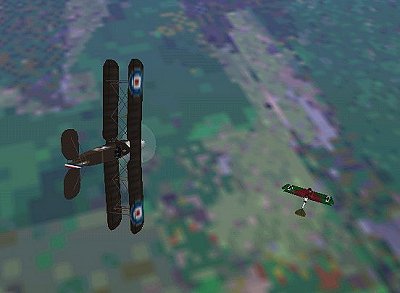
">
">
">
">
Surprise: A key elment to winning against enemy scouts is surprise. While you may think surprise is not possible with the various aids in CFS, it can still be done, especially if your intended victim is distracted. Diving down from above is the typical method of a surprise attack, but surprise can be achieved from below as well. When the enemy is flying over and to your front, go into a shallow dive to gain speed, then pull up almost to a stall. Put a solid burst into your enemy, and then dive away. |
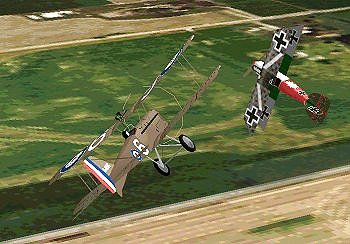
">
">
">
">
Dive and Zoom: An altitude advantage is crucial to tactical success, and this allows a pilot to use a primary attack technique: the dive and zoom. In this attack, you dive down on your opponent and put a good solid burst into him. You then reduce the dive and extend to fly away. If your opponent is turning, extend into the direction opposite of his turn, thus giving yourself extra distance before he turns around. This technique is particularly useful with aircraft that are not as maneuverable as their opponent. |
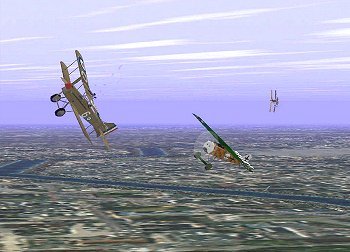
">
">
">
">
Teamwork: Regardless of the aircraft flown, teamwork is critical. It is important to watch your buddies, and engage in combat at a crucial moment. Do not allow your fellow pilots to absorb an enemy attack without you! As soon as an enemy turns the "six" of a friend, you can jump them and take them out. Teamwork does not mean you're constantly flying on the wing of another. Instead, it involves top notch situational awareness, knowing where enemy planes are going and where your friends are. For example, if you find yourself under attack and alone, turn back to rejoin friends. While sounding so simple, it is amazing how few actually do this. Using teamwork, even a smaller team can beat superior numbers. |
Maneuver: Manfred von Richthofen did not support maneuver techniques, or what was called "stunting." Instead, he tended to subcribe to surprise and teamwork. However, stunting can be very useful, naturally if you have a more nimble machine than your opponent. However, more nimble machines tend to be slower than the powerful "dive and zoom" types. As a result, once you engage you must fight your way out. Also, it is more difficult to catch enemy aircraft in the area, even two-seaters. Some pilots naturally gravitate to the maneuverable aircraft, while others like raw power with the ability to pursue enemy aircraft. One key to stunting... once you are on the tail of an enemy aircraft, you must stay there until he goes down. |
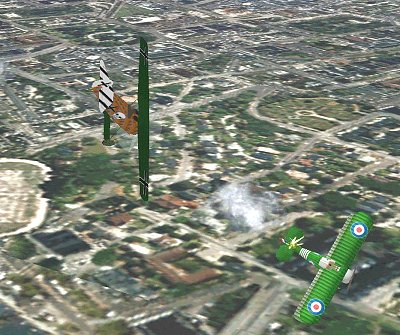
">
">
">
">
Pride and Arrogance: The opposite of teamwork is going it alone. Sometimes this is necessary, as there is nobody else to do it. But often times this is simply a factor of pride. Time and time again, real life fighter pilots have been killed or shot down because of their pride. It is no different in CFS. Attacking two seaters from behind, engaging more nimble opponents in a twisting fight when out numbered... the list is almost endless. Von Richthofen's secret of success and survival was his cold calculation of the odds, and determining the best time to fight, and when to run. On the other hand, pride killed Werner Voss. While an excellent pilot, he engaged a group of SE5as at severe odds, and while damaging nearly all of them, it cost him his life. |
Common Mistakes |
">
">
">
">
Many virtual pilots make the same mistakes that real pilots do, hence why CFS is called a simulation, rather than just a game. Real tactics work... and real mistakes are fatal. Fortunately for many of us, it is only a simulation! |
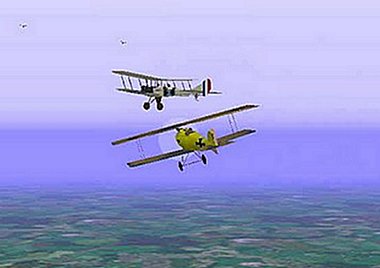
">
">
">
">

Gunnery and engagement techniques |
Turning away from an attack: A common mistake made by many inexperienced pilots is to turn away from an impending attack. They believe that by doing this they can run away. This is a serious mistake, and usually ends with the defender being flamed. The best response is to turn into the attack. While counter intuitive, it actually reduces the exposure time to the attack, and keeps the enemy off your "six." It also gains you valuable time to allow for a buddy to help you out. |
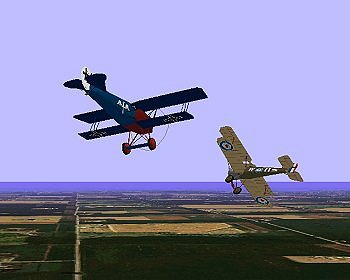
">
">
">
">